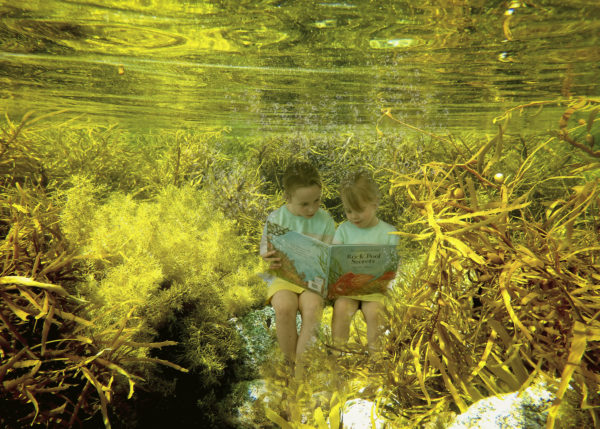Threatened ecosystems considered by the public to be dry, brown and ugly are having their conservation value overlooked in favour of greener, wet forests, according to new Deakin research.
Researchers from Deakin University’s School of Life and Environmental Sciences are concerned a mismatch between conservation goals and human preferences could mean less picturesque but vital habitats are missing out on reserve protection in favour of more conventionally beautiful areas.
In a first-of-its-kind study – published in the journal Science of the Total Environment – the research team asked 500 Victorians to rank the biodiversity and conservation value of five different ecosystems, as well as recording their preferences and attitudes when shown photos of each habitat.
Lead researcher Heather Kiley, an honours student in the School of Life and Environmental Sciences, said the ecosystems people found the most scenically attractive closely matched those they thought had the largest biodiversity and conservation value.
“The study found people favoured wet forest, followed by dry forest, Mallee, heathland and then grassland, and their perceived conservation value followed the same ranking,” Ms Kiley said.
Respondents were four times more likely to prefer wet forest than most other ecosystems, and perceived it as the most biodiverse. They used words like lush, cool, green, vibrant and alive to describe it.
“However, we know that grassland, which scored at the bottom of each ranking, is actually a critical habitat for many threatened Australian species. In fact, all these ecosystems play an important role in providing a home for Victorian wildlife,” Ms Kiley explained.
[testimonial_text]The problem is that landscapes which are preferred by humans may not always be ecologically diverse and resilient. On the flipside, ecologically important or significant ecosystems may sometimes be seen as unattractive or unimportant.[/testimonial_text]
[testimonial_picture name=”Ms Heather Kiley” details=”Lead Researcher”]
 [/testimonial_picture]
[/testimonial_picture]Ms Kiley said the research findings were reflected in the makeup of Victoria’s reserve system, with the aesthetic preferences of survey respondents aligning with the proportion of each ecosystem’s representation in parks – with the exception of heathland and Mallee.
“In Australia, reserve selection has historically been based on scenic, recreational or perceived wilderness values, rather than biodiversity conservation values.
“This means that some ecosystems are underrepresented in the reserve systems. For example, 90 per cent of Australia’s native grassland is now on private land, and less than five per cent is within conservation reserves.”
Ms Kiley said the order of ecosystem preference recorded in her research also followed the amount of tree cover present, and to some extent its level of “green-ness”.
“We currently have a strong ‘eco’ link with tree planting and, while this can have some great environmental benefits, it’s not the whole answer,” she said.
“The word ‘green’ is universally associated with pro-environmental attitudes, politics and behaviour, but this may have the unintended consequence of suggesting that greener landscapes are healthier, more biodiverse, or more worthy of conservation, even in a ‘wide brown land’ like Australia.
“Maybe we need to think about making brown the new green.”
Research supervisor Associate Professor Mike Weston, a conservation biologist in Deakin’s Centre for Integrative Ecology (CIE), said under-appreciation of ecosystems was a fundamental driver of the world’s biodiversity extinction crisis.
[testimonial_text]Since the arrival of European settlers in 1788, Australia has experienced a great loss of biodiversity.[/testimonial_text]
[testimonial_picture name=”Associate Professor Mike Weston” details=”Deakin University Centre for Integrative Ecology”]
 [/testimonial_picture]
[/testimonial_picture]“One key way to quell that is the creation and management of reserve systems, but we must ensure that these are established with conservation goals at top of mind, not just because it’s a pretty place to have a picnic or ride a mountain bike,” Associate Professor Weston said.
Published by Deakin Research on 23 November 2017



